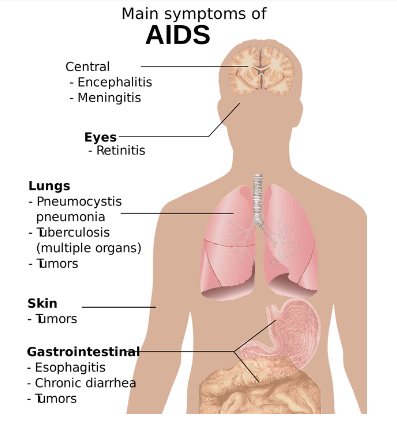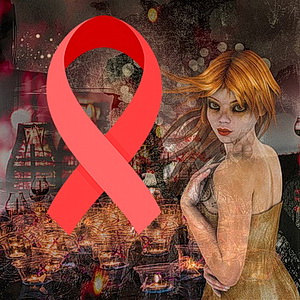HIV and Aids are two correlated ailments which have serious consequences for patients. The aim of our discussion today is to understand what each entails and the issues that must be dealt with.
Defining HIV
First and foremost, HIV is a deadly virus that has a significant impact on the person’s immune system. The immune system is the all-important defense mechanism of the body. Its main objective is to protect the body from diseases. When the body’s natural armor against unfavorable agents becomes comprised, there is a definite cause for concern.
The acronym HIV, which means Human Immunodeficiency Virus, decimates the white blood cell count in the body. These cells are known as T-helper or CD4 and are replaced by HIV, which multiplies once it enters these spaces.
Gradually, the white blood cell count declines as the HIV spreads further. This results in the failure of the immune system to act appropriately. Therefore, an HIV patient would find it increasingly troublesome to deflect diseases since his/her body’s natural defense will fail to do so.
Thankfully, there are legitimate antiretroviral options available to combat HIV in patients, which can afford them a chance at a normal life again. Of course, treatment depends on the stage at which HIV is diagnosed. If the patient is lucky and the diagnosis is done relatively early, then doctors can work their way to better long-term health in patients. This is precisely why regular HIV testing is recommended.
HIV can be found in a person’s semen, blood, body fluids and even breast milk in some cases. It cannot be transmitted through urine, saliva or perspiration. However, individuals must be extraordinarily cautious when they initiate sexual intercourse, as adequate protection is obligatory to avoid transmission of HIV (or any type of sexual disease).
There are other factors which pertain to HIV as well. A contaminated or used syringe can be the cause of HIV. This is why it is imperative to use a sealed and brand new needle to inject any drugs or execute a blood test. Last but not least, women who are expecting and develop HIV, unfortunately, must act promptly. Pregnant females must be aware of the fact that if the virus is situated in their blood, it can easily pass on to the unborn child. Alternatively, the virus may be carried into the child’s body through breastfeeding. Pregnant women must already exercise every caution in the book and this is amplified when motherhood is imminent.
Understanding Aids
 Aids and HIV are frequently mentioned in tandem which begs the question: how are they different? Aids is actually the syndrome or symptoms that are caused by HIV.
Aids and HIV are frequently mentioned in tandem which begs the question: how are they different? Aids is actually the syndrome or symptoms that are caused by HIV.
Aids stands for Acquired Immune Deficiency Syndrome. It is also called advanced HIV or late-stage HIV by doctors. A person with Aids is said to have a weak immune system which is unable to stave off ailments and infections. Aids is essentially the final phase of HIV, which means the infection has manifested itself considerably. The consequences of this can be fatal.
Carriage of HIV
Now that we’ve shared the fundamental details of HIV and Aids, we can shift the focus to learning how it is transmitted from one person to another person.
Human Immunodeficiency Virus is disseminated through a number of ways. The most common theme is that a person may make contact with specific bodily fluids which emanate from a person who has HIV. Examples include the blood of a patient. For instance, if a person is subjected to a syringe which was used by another patient, then the blood of the former may already be contaminating the needle, which is how it could find its way into the bloodstream of the other. Semen can be transmitted through unprotected sex and so can pre-seminal lubricants. A mother may directly affect her infant child through the process of breastfeeding.
The actual procedure is called HIV transmission. The most common of the aforementioned causes is sexual intercourse. In the US, it is the number one reason for contracting HIV. Obviously, to greatly diminish the likelihood of HIV, individuals must be responsible and use precautions. Condoms are a given and instructions on how to use these are provided with the packaging.
Moreover, agents which do not transmit HIV include basic contact between humans such as exchanging pleasantries or embracing another person. Coming in contact with commodities such as dishes or doorknobs does not mean HIV is transferable (although it is always advisable to wash your hands frequently in order to help avoid any number of other diseases, including the common cold). Foreign carriers such as mosquitoes and fleas, which are known to carry multiple diseases, also do not carry this virus either.
Treating HIV Patients
Antiretroviral therapy can assuage and alleviate is when medication is prescribed which tackles the HIV infection. People who undergo this therapy are required to consume a combination of medicines on a daily basis. They actively prevent the virus from multiplying and replacing white blood cells in the human body. Additionally, the medication vastly reduces the quantity of the virus in the body. Naturally, lesser HIV is tantamount to better health and a greater capability of the body to combat concerns is restored.
In terms of the actual diagnosis, there is a fixed criterion to determine whether a person is suffering from HIV. Tests may indicate that determining a person’s white blood cell. A low count can indicate numerous issues, HIV being one of them. A CD4 count below 200 cells per cubic millimeter is a sign that HIV is at play. The average or healthy count of CD4 ranges from 500 to 1600 cells per cubic millimeter. Alternatively, the other reason may be that the person develops an opportunistic infection, which brings about HIV.
There is no cure for AIDS, but it can be controlled and people can live a fairly normal lifestyle as former NBA star Magic Johnson can attest to. With that said, careful practices during sex and when using injections is paramount to avoid the possibility of contracting this disease.


 Maybe Al Capone had it right. No, we are not talking about his hideous crimes, but his (criminal’s and non-criminal’s) ingenuity of realizing that alcohol prohibition was not going to stop the average Joe or Jane from drinking this popular beverage, otherwise known to some as ‘booze’ or ‘happy juice’.
Maybe Al Capone had it right. No, we are not talking about his hideous crimes, but his (criminal’s and non-criminal’s) ingenuity of realizing that alcohol prohibition was not going to stop the average Joe or Jane from drinking this popular beverage, otherwise known to some as ‘booze’ or ‘happy juice’. Now that we have elaborated the benefits, we can look at the downside of drinking alcohol – amd there are many. First and foremost, is it important to note that caution is advised when drinking because the more you drink, the greater the chance there is of issues rising, or should we say, there is more of a chance of just plain getting yourself in trouble, to say it mildly.
Now that we have elaborated the benefits, we can look at the downside of drinking alcohol – amd there are many. First and foremost, is it important to note that caution is advised when drinking because the more you drink, the greater the chance there is of issues rising, or should we say, there is more of a chance of just plain getting yourself in trouble, to say it mildly.


